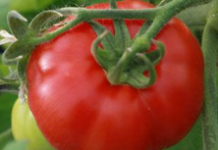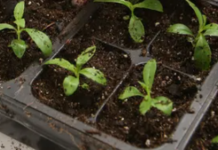- The use of evergreen trees to celebrate the winter season occurred before the birth of Christ.
- The first decorated Christmas tree was in Riga, Latvia in 1510.
- The first printed reference to Christmas trees appeared in Germany in 1531.
- Besides evergreens, other types of trees such as cherry and hawthorns were used as Christmas trees in the past.
- Using small candles to light a Christmas tree dates back to the middle of the 17th century.
- Thomas Edison’s assistant, Edward Johnson, came up with the idea of electric lights for Christmas trees in 1882. Christmas tree lights were first mass-produced in 1890.
- In 1900, large stores started to erect big illuminated Christmas trees.
- The tradition of an official Chicago Christmas tree was initiated in 1913 when one was first lit by Mayor Carter H. Harrison in Grant Park.
- The official Christmas tree tradition at Rockefeller Center began in 1933. Since 2004 the tree has been topped with a 550-pound Swarovski Crystal star. And since 2007, the tree has been lit with 30,000 energy-efficient LED’s which are powered by solar panels.
- Every year since 1947, the people of Oslo, Norway have given a Christmas tree to the city of Westminster, England. The gift is an expression of good will and gratitude for Britain’s help to Norway during World War II.
Presidential Christmas Trees
- In 1856 Franklin Pierce, the 14th President of the United States, was the first President to place a Christmas tree in the White House.
- President Coolidge started the National Christmas Tree Lighting Ceremony on the White House lawn in 1923.
- Teddy Roosevelt banned the Christmas tree from the White House for environmental reasons.
- From 1948 to 1951, President Truman spent Christmas at his home in Independence, Missouri, and lit the National Community Christmas Tree by remote control. Truman agreed to stay at the White House for Christmas 1952, and personally lit the tree.
- In 1963, the National Christmas Tree was not lit until December 22nd, because of a national 30-day period of mourning following the assassination of President Kennedy.
- Since 1966, the National Christmas Tree Association has given a Christmas tree to the President and first family for display in the Blue Room.
A Tree Grows In Brooklyn, and Elsewhere
- Nineteenth century Americans cut their trees in nearby forests. Today most real Christmas trees are grown on farms as sustainable crops like corn or pumpkins.
- 98 percent of all Christmas trees are grown on farms, while only 2% are cut from the wild.
- To ensure enough trees for harvest, growers plant one to three seedlings for every tree harvested.
- In 2012, 46 million Christmas tree seedlings were planted by U.S. growers.
- More than 2,000 trees are usually planted per acre. On average 1,000-1,500 of these trees will survive. In the northern part of the country, perhaps 750 trees will remain.
- Almost all trees require shearing to attain the Christmas tree shape. At six to seven feet, trees are ready for harvest.
- It takes six to ten years of fighting heavy rain, wind, hail and drought to get a mature tree.
- Most Christmas trees are cut weeks before they get to a retail outlet. It is important to keep them watered thoroughly when they reach your home. In the first week, a Christmas tree in your home will consume as much as a quart of water per day.
Is It or Isn’t It?
- Artificial Christmas trees were developed in Germany during the 19th century and later became popular in the United States. These “trees” were made using goose feathers that were dyed green and attached to wire branches. The wire branches were then wrapped around a central dowel rod that acted as the trunk.
- In 1930 the U.S.-based Addis Brush Company created the first artificial Christmas tree made from brush bristles. The company used the same machinery that it used to manufacture toilet brushes, but they were dyed green.
- Artificial Christmas trees made largely from aluminum were manufactured in the United States, first in Chicago in 1958.
- Today, most artificial Christmas trees are made from PVC plastic. PVC trees are fire-retardant but not fire-resistant. Eighty percent of artificial trees worldwide are manufactured in China.
- 10.9 million artificial trees were purchased in the United States in 2012.
To Market to Market
- Live Christmas trees have been sold commercially in the United States since about 1850.
- The first Christmas tree retail lot in the United States was started by Mark Carr in New York, in 1851.
- In 2012, 35% of real Christmas trees sold were from chain stores or garden centers/nursery, 24% from cut and harvest farms, 15% from retail tree lots, and 15% from non-profit groups.
- In 2012, 85% of the Christmas trees purchased were pre-cut, and 14% were cut-your-own.
- An estimated 175,000 real Christmas trees are sold via e-commerce or catalogue and shipped mail order.
- The most popular Christmas trees are: Scotch pine, Douglas fir, noble fir, Fraser fir, balsam fir, Virginia pine and white pine.
- Christmas trees are baled to protect the branches from damage during shipping.
- Helicopters help to lift harvested Christmas trees from farms.
The United States of Trees
- In the United States, there are more than 15,000 Christmas tree farms.
- There are approximately 350 million Christmas trees growing on U.S. farms.
- Approximately 100,000 people are employed full or part-time in the Christmas tree industry.
- 24.5 million farm-grown Christmas trees were purchased in the United States in 2012, with a real market value of $1.01 billion.
- Oregon, North Carolina, Michigan, Pennsylvania, Wisconsin, Washington, New York, and Virginia are the top Christmas tree producing states.
- 350,000 acres of land in the United States are in production for growing Christmas trees.
- Christmas trees are grown and harvested in all 50 states.
- Michigan ranks third among all states in the production of real Christmas trees, but grows a larger variety of Christmas trees than any other state.
Make Your Christmas Really Green
- 93% of real Christmas tree consumers recycle their tree in community recycling programs, their garden or backyard.
- In the United States, there are more than 4,000 Christmas tree recycling programs.
- Recycled real Christmas trees have been used to make sand and soil erosion barriers and been placed in ponds for fish shelter.
- Growing Christmas trees provides a habitat for wildlife.
- Christmas trees can remove dust and pollen from the air.
- Artificial trees will last for six years in your home, but for centuries in a landfill.
- An acre of Christmas trees provides the daily oxygen requirements of 18 people.
- You should not burn your Christmas tree in the fireplace; it can contribute to creosote buildup.
- Live Christmas trees are involved in less than one-tenth of one percent of residential fires, and mostly when ignited by some external ignition sources. The major factors involved in Christmas tree fires are electrical problems, decorative lights, candles, and a heat source too close to the tree.
I hope you enjoyed reading this information. Information is this column is from the University of Illinois Extension service.
I hope you have a very Merry Christmas!



